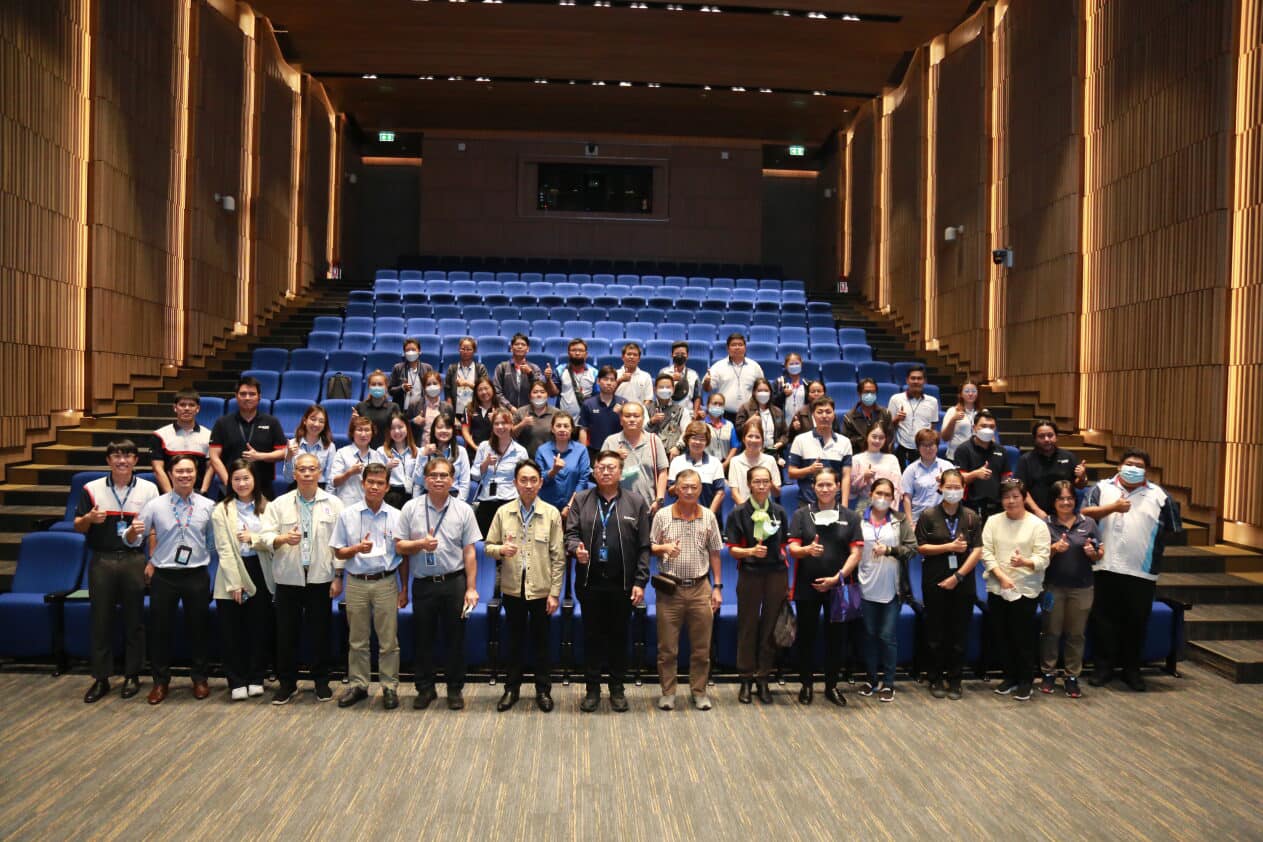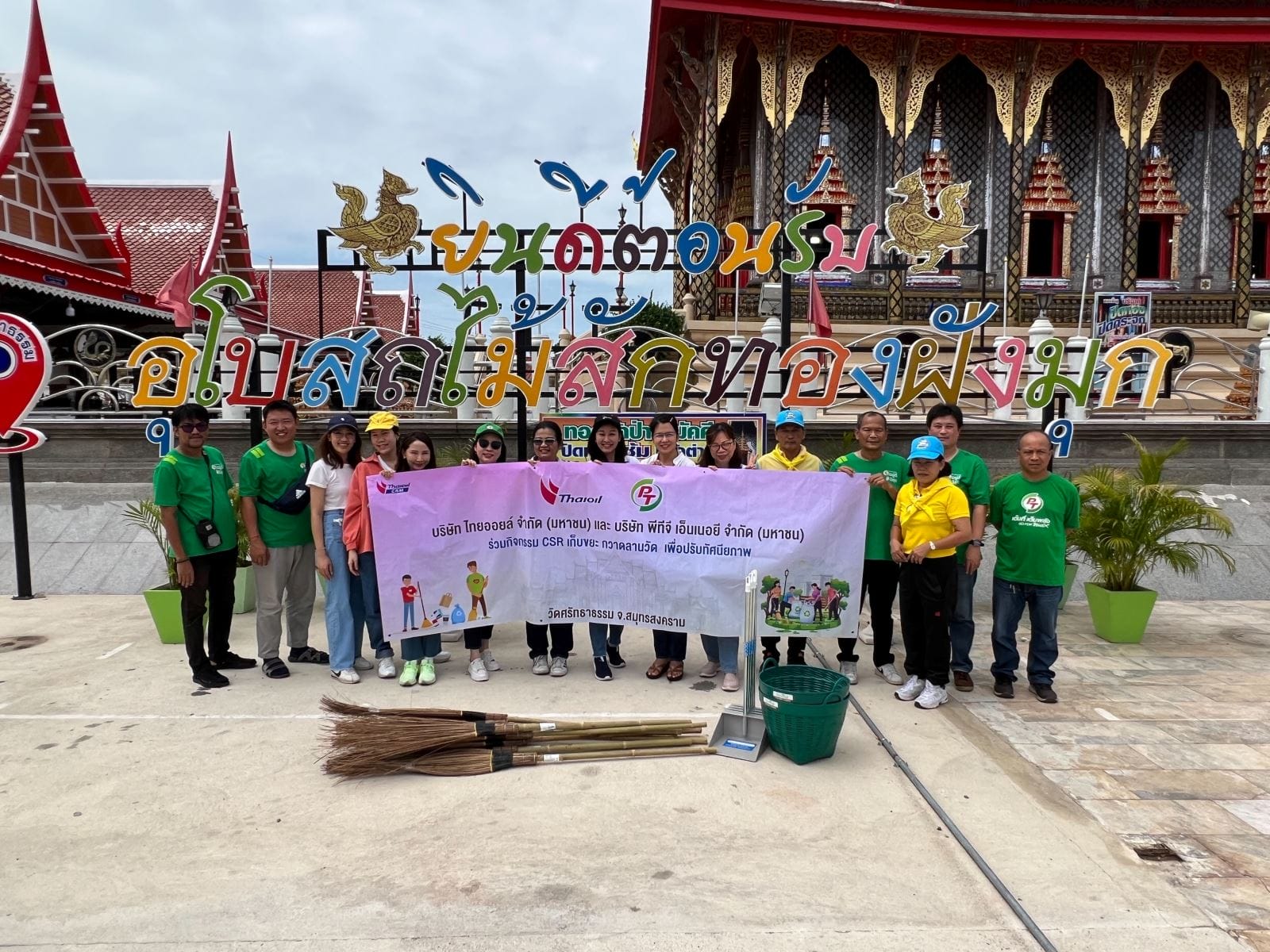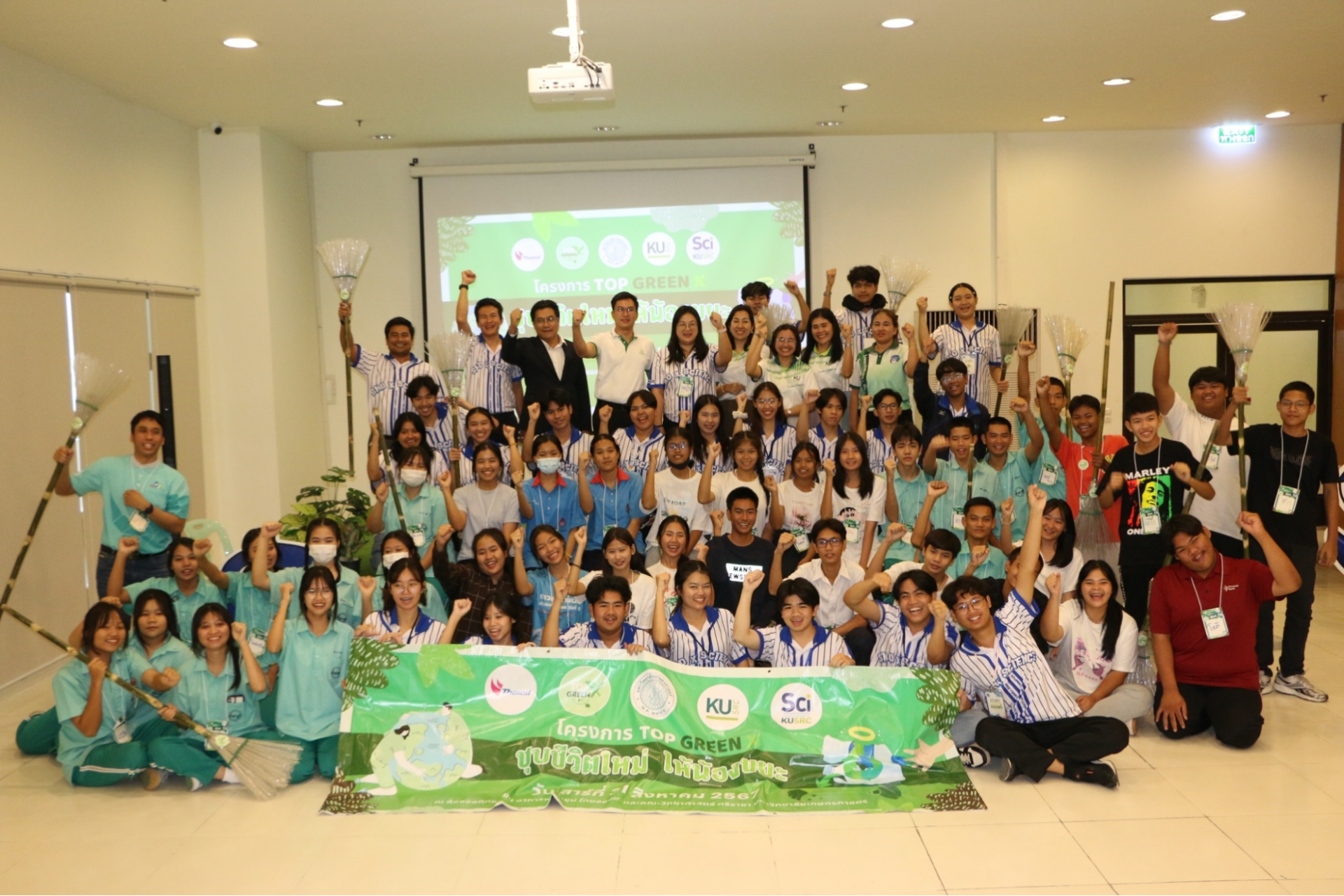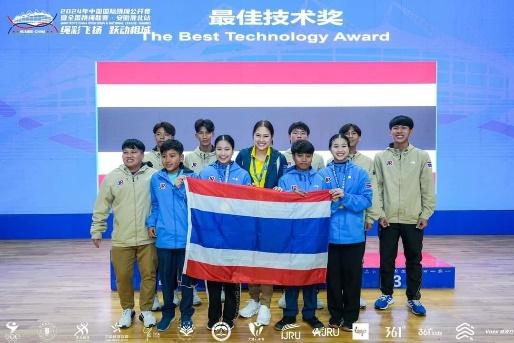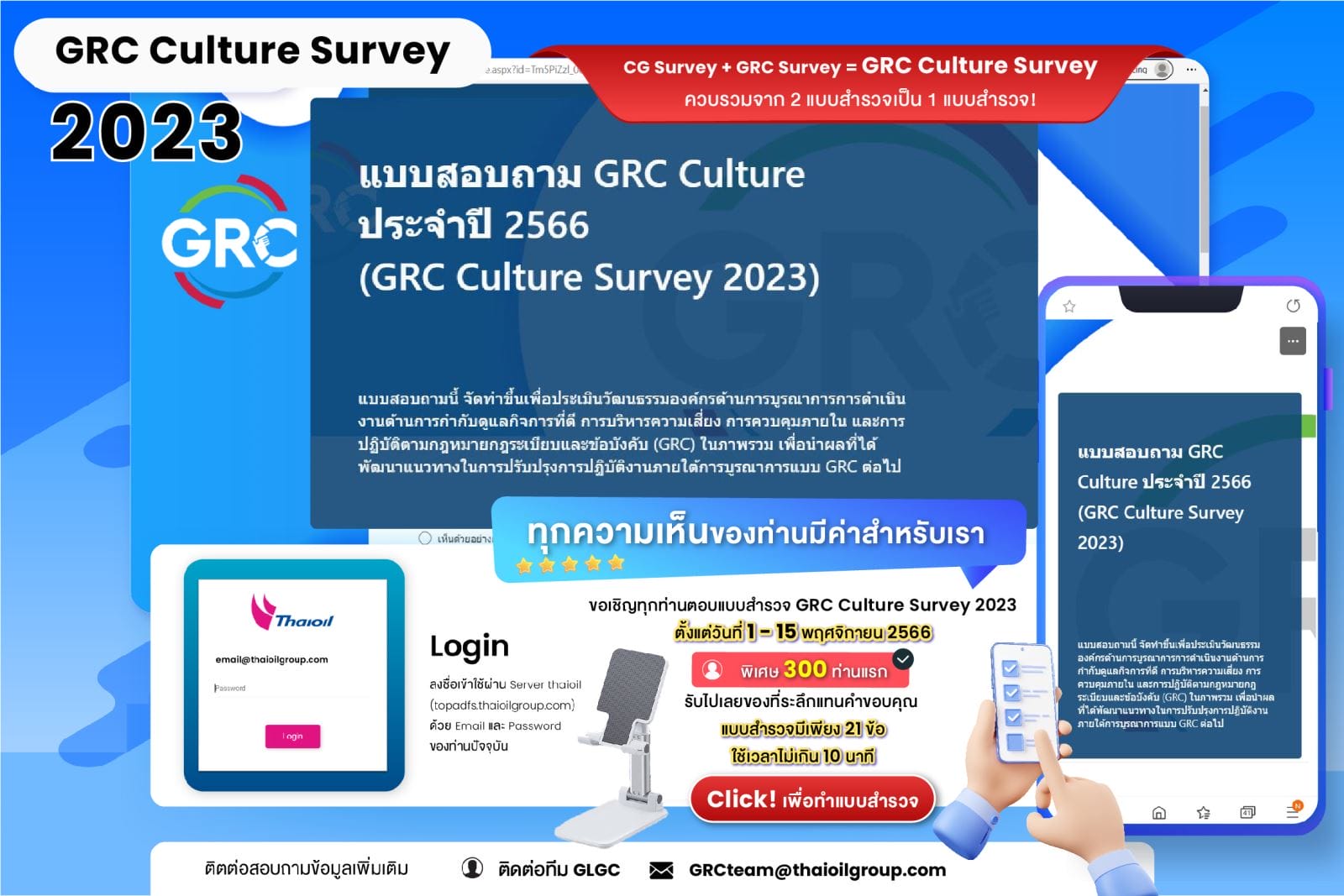Biodiversity
Challenges, Risks,
and Impacts
Nowadays, the world is experiencing a significant loss of biodiversity. Massive Climate Changes and human activities have continuously accelerated the decline in the quantity and variety of plants and animals
Impacting High-Biodiversity Wilderness Areas. These situations pose significant challenges to Thaioil Group, as the Company must operate the business in line with biodiversity agreements and prevent biodiversity loss on land, in water, and through deforestation. Recognized the significant impacts on biodiversity and impact on the business operation of Thaioil Group, the Company has not only established has not only determined strong commitments and targets on biodiversity but has also conducted a biodiversity risk assessment, developed an action plan, and implementation to achieve the target. Moreover, Thaioil Group strives to create partnership networks with several sectors, including the educational institutions, communities, and government agencies, to collaboratively prevent and restore biodiversity in both terrestrial and aquatic ecosystems.
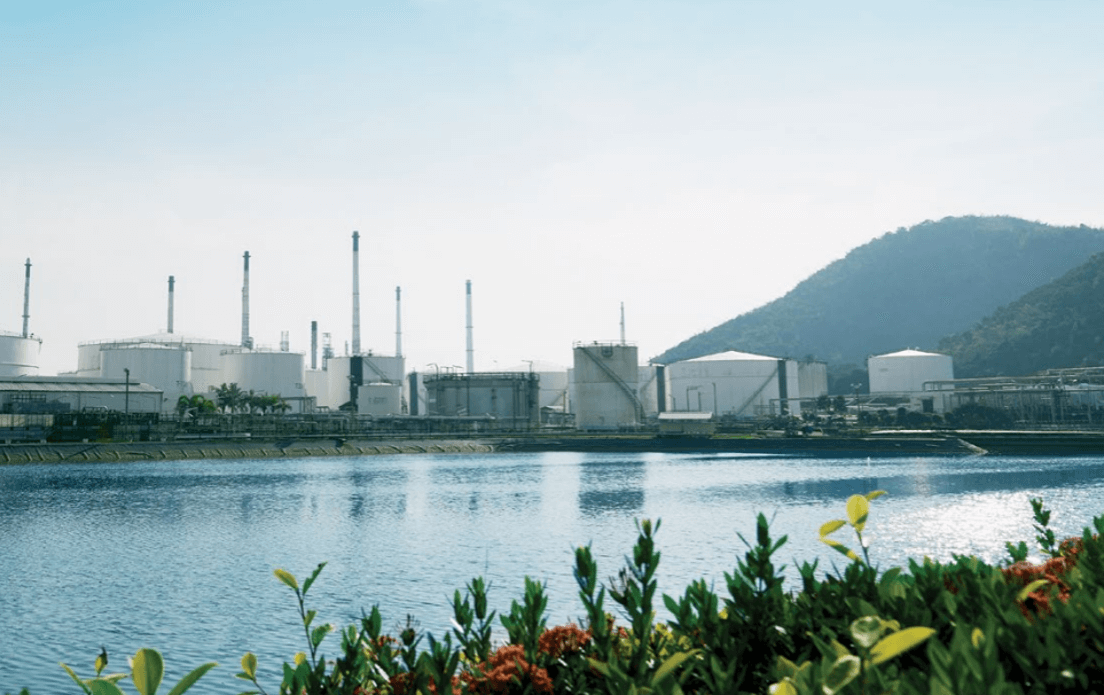
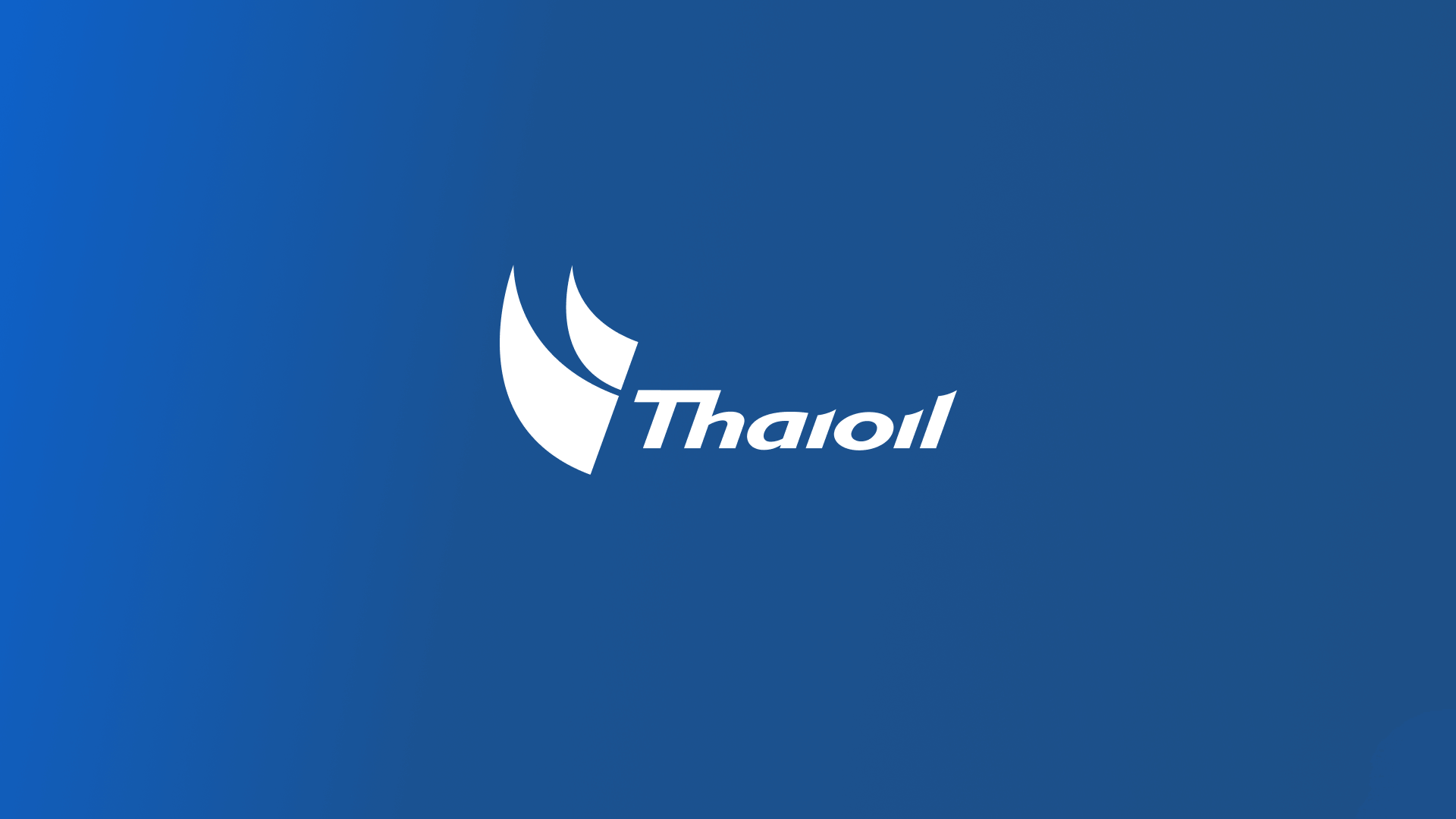
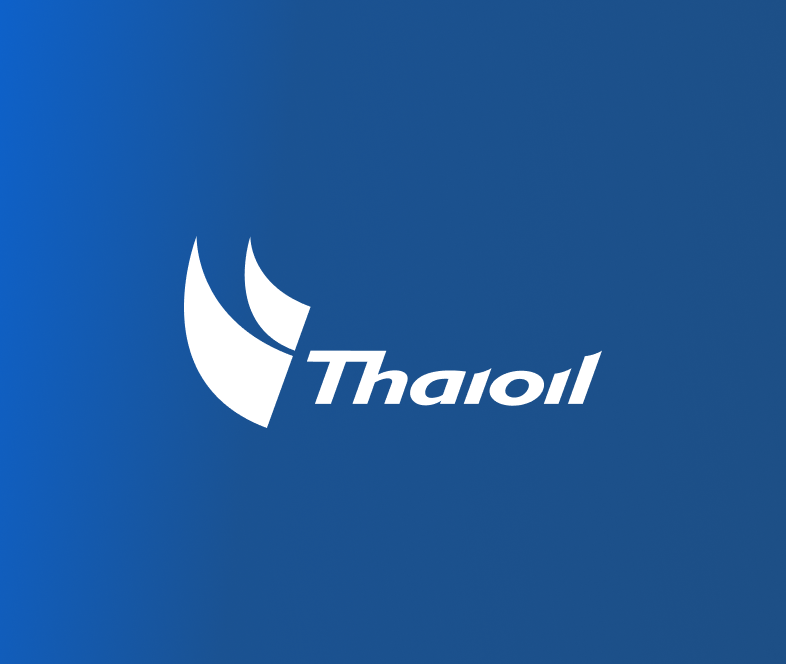
Commitment
Thaioil Group is committed to conduct business with responsibility for society, environment, biodiversity, and ecosystem preservation. The Company has integrated the environmental impact assessment on biodiversity and forest areas into the business operations.
The commitment is to avoid and reduce potential risks while supporting sustainable development in all dimensions: economic, environmental, and social dimensions. The Company has committed to No Net Deforestation by implementing reforestation and tree planting to compensate for any loss of forest from the business activities. Furthermore, this commitment ensures that the Company has controlled and minimized environmental impacts and drives the business towards No Net Loss (NNL) of terrestrial and aquatic biodiversity. Thaioil Group recognizes the invaluable nature of biodiversity as a shared resource and strives to contribute to its preservation for the benefit of all.
In 2023, Thaioil Group elevated the policy commitment in “Thaioil and Subsidiaries’ Quality, Security, Safety, Occupational Health, Environment, and Energy Management Policy” and “Thaioil and Subsidiaries’ Biodiversity Statement” through the approval of the Board of Directors to consistently drive the most efficient environmental management practices.
Thaioil and Subsidiaries’ Quality, Security, Safety, Occupational Health, Environment, And Energy Management Policy



Management Approach
and Performance
Thaioil Group has applied the Biodiversity and Ecosystem Service Manual that had been reviewed together with PTT Group Biodiversity and Ecosystem Service.
This manual was developed from the integration of various national and international standards such as the Thailand’s Master Plan for Integrated Biodiversity Management, the GRI Standard, IPIECA, and others. The Company uses this manual to perform a biodiversity risk assessment within business operations. In addition, the Company commits to No Net Deforestation by implementing reforestation and tree planting to compensate for any forest loss from our business activities and drives the business towards No Net Loss (NNL) of terrestrial and aquatic biodiversity.
Biodiversity Risk
and Impact Assessment
- Business Risks: Biodiversity loss driven by climate change, pollution, and seasonal fluctuations could lead to a scarcity of natural resources essential for Thaioil Group’s operations.
- Regulatory Risks: The increasing stringency of environmental regulations, directly or indirectly linked to biodiversity, could raise business costs and complexities in operations.
- Reputational Risks: Failure to manage biodiversity effectively may harm Thaioil Group’s corporate image and erode stakeholder trust, particularly among investors and business partners who value biodiversity management.
- Environmental and Community Risks: Biodiversity loss could negatively affect community livelihoods and potentially create long-term impacts on Thaioil Group’s operations.
Therefore, Thaioil Group has adopted the PTT biodiversity risks assessment tool, which has been developed in alignment with the GRI Reporting Protocol and assessment from Dow Jones Sustainability Indices (DJSI). The tool has determined the procedure and guidelines for risk assessment of the biodiversity and ecosystems. To conduct the assessment, the Company has utilized reliable data from various sources, such as the Integrated Biodiversity Assessment Tool (IBAT), WWF Biodiversity Risk Filter, and IUCN Red List, etc.
Dependency-related Biodiversity Risks considered in Risk Assessment
The assessment of biodiversity-related risks associated with operations reliant on ecosystem services across various industrial sectors in different locations can be conducted using internationally recognized tools such as the WWF Biodiversity Risk Filter and Encore.
Thaioil Group has evaluated such risks using the WWF Biodiversity Risk Filter to assess dependency. This tool ranks the level of reliance on ecosystem services by industry type, including oil refineries, power plants, and petrochemical facilities. The dependency levels range from low to very high (1-5) and a level of no dependency (0). Furthermore, the assessment revealed that Thaioil Group operates in areas with high to very high levels of dependency on natural ecosystem services which includes the following issues:
- Water Scarcity
- Extreme Heat
- Land, Freshwater and Sea Use Change
- Tree Cover Loss
- Pollution
Nevertheless, in 2024, the result of the biodiversity risk assessment indicated the risk at low level, because Thaioil Group’s business operational areas are located outside the High-Biodiversity Wilderness Areas with distance between the Company’s operational areas and High-Biodiversity Wilderness Areas exceeds 5 kilometers. The result of the biodiversity assessment of Thaioil Group is illustrated in the table below:
Number of Operational Sites | Area of Operational Sites | ||
|---|---|---|---|
Rai | Hectare | ||
Total operational site | 1 | 1,890 | 302.4 |
Total operational site that are assessed | 1 | 1,890 | 302.4 |
Total operational sites that face the risk exposure | 0 | 0 | 0 |
Management Plan | 0 | 0 | 0 |
พื้นที่ปฏิบิติการทั้งหมด
จำนวนพื้นที่ปฏิบัติงาน
1
จำนวน
พื้นที่ปฏิบัติงาน
23,610.25
ไร่
พื้นที่ปฏิบิติการที่ได้รับการประเมินทั้งหมด
จำนวนพื้นที่ปฏิบัติงาน
1
จำนวน
พื้นที่ปฏิบัติงาน
23,610.25
ไร่
พื้นปฏิบิติการที่เผชิญความเสี่ยง
จำนวนพื้นที่ปฏิบัติงาน
0
จำนวน
พื้นที่ปฏิบัติงาน
0
ไร่
แผนการบริหารจัดการ
จำนวนพื้นที่ปฏิบัติงาน
0
จำนวน
พื้นที่ปฏิบัติงาน
0
ไร่
Remark: Thaioil Group’s operational site covers TOP, TLB, TPX, LABIX, TOPSPP in Si Racha District Chonburi Province
Mitigation
Hierarchy
The Company also applies the Mitigation Hierarchy Principle to prevent, avoid, mitigate, restore, and compensate for environmental impacts on biodiversity throughout the value chain.
อีกทั้งยังได้ประยุกต์ใช้หลักการบรรเทาผลกระทบตามลำดับขั้น (Mitigation Hierarchy Principle) ในการป้องกัน หลีกเลี่ยง บรรเทา ฟื้นฟู และชดเชยผลกระทบทางสิ่งแวดล้อมต่อความหลากหลายทางชีวภาพตลอดห่วงโซ่คุณค่า
The Participation Network
on Biodiversity to mitigate impacts on ecosystem
External Organizations/ Agencies
The Institute of Marine Science of Burapha University, Bang Saen
Collaboration with Biodiversity Networks
Study the marine biodiversity at the port of Thai Oil Public Company Limited.
Cooperate on study project on the impact of crude oil spills on coral reef ecosystems and marine natural resources along the coasts of Si Chang Island and Khang Khao Island in Chonburi Province.
External Organizations/ Agencies
Office of Natural Resources and Environment, Chonburi Province
Naval Science Department
Department of Fisheries, Chonburi Province
Marine and Coastal Resources Office 2
Representatives from Environment and Pollution Control Office 13
Collaboration with Biodiversity Networks
Discuss and develop the monitoring and restoration plans with government agencies.
Determine the plan for monitoring and assessing environmental impacts in short, medium, and long term.
Develop the natural resources and the environmental restoration plan with the government sector and the public.
Participate in the signing ceremony of the Memorandum of Understanding (MOU) on cooperation with the Department of Marine and Coastal Resources (DMCR) as a partner in Thailand’s mangrove forest network.
External Organizations/ Agencies
Forest Resource Management Office 3 (Phrae)
Collaboration with Biodiversity Networks
Implement the 2024 Annual Reforestation Project in Phrae Province in collaboration with the chairman and members of the community enterprise.
External Organizations/ Agencies
Mangrove Conservation Center 22 (Palian, Trang)
Seaman Company Limited
Collaboration with Biodiversity Networks
Organize meetings to promote awareness and foster community engagement in the mangrove reforestation project in Village No 2, Ban Yong Star, and Village No 4, Ban Thung Ruangthong, Palian District, Trang Province.
Improve and restore mangrove forests and ecosystems.
Biodiversity Risk
and Impact Assessment
- Business Risks: Biodiversity loss driven by climate change, pollution, and seasonal fluctuations could lead to a scarcity of natural resources essential for Thaioil Group’s operations.
- Regulatory Risks: The increasing stringency of environmental regulations, directly or indirectly linked to biodiversity, could raise business costs and complexities in operations.
- Reputational Risks: Failure to manage biodiversity effectively may harm Thaioil Group’s corporate image and erode stakeholder trust, particularly among investors and business partners who value biodiversity management.
- Environmental and Community Risks: Biodiversity loss could negatively affect community livelihoods and potentially create long-term impacts on Thaioil Group’s operations.
Therefore, Thaioil Group has adopted the PTT biodiversity risks assessment tool, which has been developed in alignment with the GRI Reporting Protocol and assessment from Dow Jones Sustainability Indices (DJSI). The tool has determined the procedure and guidelines for risk assessment of the biodiversity and ecosystems. To conduct the assessment, the Company has utilized reliable data from various sources, such as the Integrated Biodiversity Assessment Tool (IBAT), WWF Biodiversity Risk Filter, and IUCN Red List, etc.
Dependency-related Biodiversity Risks considered in Risk Assessment
The assessment of biodiversity-related risks associated with operations reliant on ecosystem services across various industrial sectors in different locations can be conducted using internationally recognized tools such as the WWF Biodiversity Risk Filter and Encore.
Thaioil Group has evaluated such risks using the WWF Biodiversity Risk Filter to assess dependency. This tool ranks the level of reliance on ecosystem services by industry type, including oil refineries, power plants, and petrochemical facilities. The dependency levels range from low to very high (1-5) and a level of no dependency (0). Furthermore, the assessment revealed that Thaioil Group operates in areas with high to very high levels of dependency on natural ecosystem services which includes the following issues:
- Water Scarcity
- Extreme Heat
- Land, Freshwater and Sea Use Change
- Tree Cover Loss
- Pollution
Nevertheless, in 2024, the result of the biodiversity risk assessment indicated the risk at low level, because Thaioil Group’s business operational areas are located outside the High-Biodiversity Wilderness Areas with distance between the Company’s operational areas and High-Biodiversity Wilderness Areas exceeds 5 kilometers. The result of the biodiversity assessment of Thaioil Group is illustrated in the table below:
Number of Operational Sites | Area of Operational Sites | ||
|---|---|---|---|
Rai | Hectare | ||
Total operational site | 1 | 1,890 | 302.4 |
Total operational site that are assessed | 1 | 1,890 | 302.4 |
Total operational sites that face the risk exposure | 0 | 0 | 0 |
Management Plan | 0 | 0 | 0 |
พื้นที่ปฏิบิติการทั้งหมด
จำนวนพื้นที่ปฏิบัติงาน
1
จำนวน
พื้นที่ปฏิบัติงาน
23,610.25
ไร่
พื้นที่ปฏิบิติการที่ได้รับการประเมินทั้งหมด
จำนวนพื้นที่ปฏิบัติงาน
1
จำนวน
พื้นที่ปฏิบัติงาน
23,610.25
ไร่
พื้นปฏิบิติการที่เผชิญความเสี่ยง
จำนวนพื้นที่ปฏิบัติงาน
0
จำนวน
พื้นที่ปฏิบัติงาน
0
ไร่
แผนการบริหารจัดการ
จำนวนพื้นที่ปฏิบัติงาน
0
จำนวน
พื้นที่ปฏิบัติงาน
0
ไร่
Remark: Thaioil Group’s operational site covers TOP, TLB, TPX, LABIX, TOPSPP in Si Racha District Chonburi Province
Mitigation
Hierarchy
The Company also applies the Mitigation Hierarchy Principle to prevent, avoid, mitigate, restore, and compensate for environmental impacts on biodiversity throughout the value chain.
อีกทั้งยังได้ประยุกต์ใช้หลักการบรรเทาผลกระทบตามลำดับขั้น (Mitigation Hierarchy Principle) ในการป้องกัน หลีกเลี่ยง บรรเทา ฟื้นฟู และชดเชยผลกระทบทางสิ่งแวดล้อมต่อความหลากหลายทางชีวภาพตลอดห่วงโซ่คุณค่า
The Participation Network
on Biodiversity to mitigate impacts on ecosystem
External Organizations/ Agencies
The Institute of Marine Science of Burapha University, Bang Saen
Collaboration with Biodiversity Networks
Study the marine biodiversity at the port of Thai Oil Public Company Limited.
Cooperate on study project on the impact of crude oil spills on coral reef ecosystems and marine natural resources along the coasts of Si Chang Island and Khang Khao Island in Chonburi Province.
External Organizations/ Agencies
Office of Natural Resources and Environment, Chonburi Province
Naval Science Department
Department of Fisheries, Chonburi Province
Marine and Coastal Resources Office 2
Representatives from Environment and Pollution Control Office 13
Collaboration with Biodiversity Networks
Discuss and develop the monitoring and restoration plans with government agencies.
Determine the plan for monitoring and assessing environmental impacts in short, medium, and long term.
Develop the natural resources and the environmental restoration plan with the government sector and the public.
Participate in the signing ceremony of the Memorandum of Understanding (MOU) on cooperation with the Department of Marine and Coastal Resources (DMCR) as a partner in Thailand’s mangrove forest network.
External Organizations/ Agencies
Forest Resource Management Office 3 (Phrae)
Collaboration with Biodiversity Networks
Implement the 2024 Annual Reforestation Project in Phrae Province in collaboration with the chairman and members of the community enterprise.
External Organizations/ Agencies
Mangrove Conservation Center 22 (Palian, Trang)
Seaman Company Limited
Collaboration with Biodiversity Networks
Organize meetings to promote awareness and foster community engagement in the mangrove reforestation project in Village No 2, Ban Yong Star, and Village No 4, Ban Thung Ruangthong, Palian District, Trang Province.
Improve and restore mangrove forests and ecosystems.
Update : February 2024







